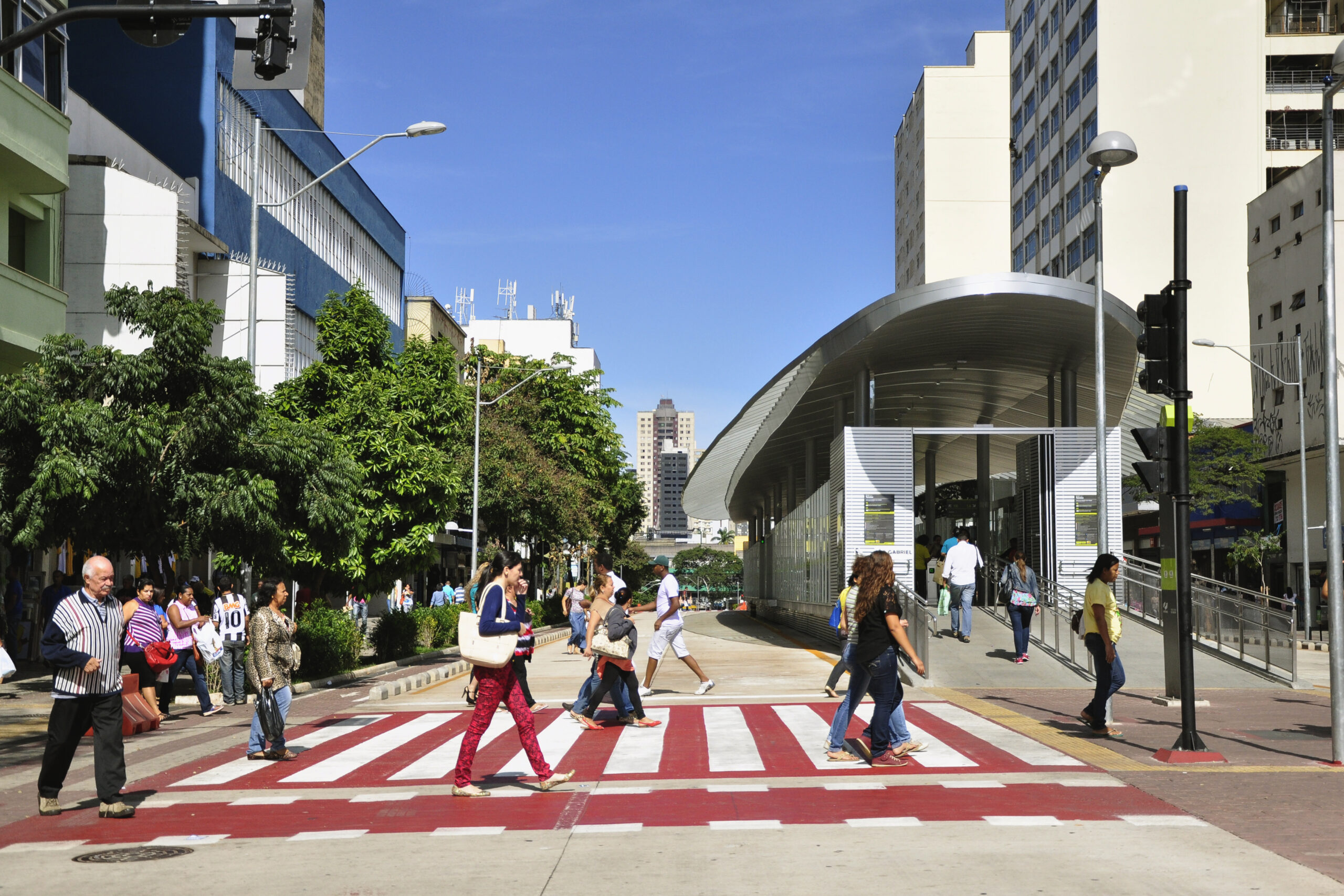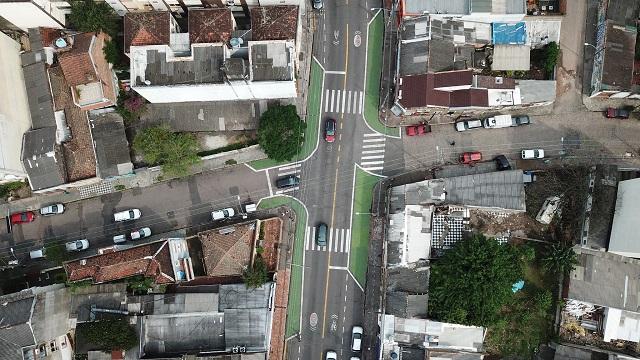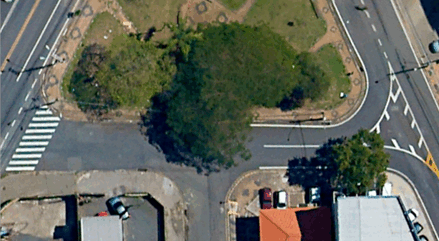
Urban development in many cities around the world prioritizes making space for cars over pedestrians, cyclists or public transportation. In Brazil, this design led to an average of more than 30,000 annual road crash fatalities nationwide by the turn of the century, as well as high levels of congestion and pollution.
But things are changing. In the last 20 years, fatalities have started to decrease, and city centers have become more vibrant, cleaner and resilient.
At the heart of these changes is implementation of the “Complete Streets” concept.
What Is the ‘Complete Streets’ Approach?
Many local governments aim to reduce traffic crashes only by changing drivers’ and passengers’ behaviors through things like seatbelt- and helmet-wearing campaigns. This approach puts the onus on individuals rather than the city to make streets safer. Complete Streets changes the paradigm, emphasizing the creation (or redesign) of streets that are safe, accessible and enjoyable for individuals of all ages and abilities.
By providing infrastructure such as bike lanes, broader sidewalks, benches and green spaces, Complete Streets encourages active modes of transportation and reduces dependency on private vehicles. It’s also a good strategy for implementing traffic calming measures that reduce car speeds, thus improving road safety.
Since Brazil passed its Federal Mobility Law in 2012, which prioritizes public transportation, pedestrians and cyclists over cars and motorcycles, local governments are gradually shifting their policies and interventions toward this more equitable and efficient model.
WRI Brasil worked with Brazil’s National Front of Mayors, Bloomberg Initiative for Global Road Safety and many other partners to support the implementation of 28 different Complete Street projects throughout the country in the last five years. While the goals of the projects vary — ranging from school zones to commercial streets to public transport hubs — each highlight how the Complete Streets approach can make public space more accessible, enjoyable, climate-resilient and safe.
Here are three cities that illustrate these transformations:
João Alfredo Street, Porto Alegre: Creating a Livable Space
With scarce road signage, narrow sidewalks and numerous car crashes, João Alfredo Street wasn’t any different from other streets in the central area of Porto Alegre, the capital of Rio Grande do Sul in southern Brazil. In 2019, the street received a complete redesign. The goal was to make the mixed-use street safer and more welcoming during the day for hundreds of school children, and at night for the many people who enjoyed going out to restaurants and nightclubs.

The transformation was done in several stages. First, the city painted and installed curb extensions and roundabouts and existing ones were redesigned. The curb extensions shortened the distances for crossing the street, while roundabouts reduced speed in the intersections.
Additional crossing lanes for pedestrians were also painted by the city and the posted speed limit was reduced from 40 kilometers per hour (25 miles per hour) to 30 kilometers (19 miles per hour), an important change especially for improving the safety of children and the elderly.
On the following stages, new street furniture was installed with vegetation, including litter bins and benches made by alumni from a social project in the neighborhood.
The street was made safer by design. Spaces where people once passed by became places for socialization and rest for individuals and groups.
Between 2016 and 2017, before the redesign, 60 crashes were reported on the street, with a total of 18 injured and one death. After the new infrastructure was installed, between 2020 and 2022, the number of crashes dropped to 26 (-56%), and the number of injured fell to seven (-61%), with no fatalities, according to the city records.
Marques do Paraná Avenue, Niterói: A More Equitable Transit Corridor
Marquês do Paraná Avenue is one of the most important transport corridors in the city of Niterói, located just east of Rio de Janeiro. It’s also crucial for thousands of pedestrians and bicyclists who commute daily between residential neighborhoods and the city center. Since the 1970s, new development prioritized improving conditions for car traffic, resulting in less space for cyclists and pedestrians. There was also no dedicated infrastructure for public transport on most of Niterói’s streets.
In 2019, the city adopted a Complete Streets approach to transform a stretch of the avenue, shifting the priority to sustainable mobility. Thirty-five percent of the space once dedicated to cars is now dedicated to public transport, cyclists and pedestrians, with improvements to sidewalks and bike lanes. The redesign also included a permanence space, with a square, benches, cycle racks and vegetation. This change represents a substantial gain in terms of environmental quality, creating a new comfortable public space in the neighborhood.
Through a holistic, system approach, urban drainage was also greatly improved. Green infrastructure, such as drainage gardens, which increased pavement permeability by 300%, and an underground reservoir with a capacity of capturing 60 cubic meters of rainwater help reduce flooding and improve safety, environmental health and urban landscape.
Delphino Cintra Street, Campinas: A Safer Street for All
Delphino Cintra Street is an important access street to the city center of Campinas and was selected to be one of the flagships of the RevivaCidade program, an urban renewal program in the central area. Campinas is the third most populous city in the state of São Paulo, northwest of the city by the same name.

The area where Delphino Cintra Street is located has many hospitals and medical offices and had a significant number of crashes recorded in the area, as well as excessive speeding. To improve safety, the local government carried out a tactical transformation of the streets to reduce and organize traffic, expand space for pedestrians and cyclists, and ensure the street was designed for permanence, accessibility and pedestrian interaction.
Launched in August 2022, the transformation generated new local dynamics. New pedestrian crossings, 645 square meters of extended sidewalks, new benches and vegetation were implemented. The city collected data and found speeding was reduced by 38% for cars and 46% for motorcycles. Data also indicates that the new crosswalks have been well used. The percentage of pedestrians using the new crosswalks varied between 66% to almost 100%, which shows that these crossings were placed on the pedestrians’ desired lines. A survey by the city of Campinas revealed that 56.5% of the users approved of the new design.
These results informed some design adjustments made during the second stage of implementation, including: revision of a bus stop, more durable painting, LED solar road studs, new and more durable bollards and inclusion of a new safe area (a pedestrian refuge island, new crosswalks and accessible sidewalks were implemented). After the changes were made, survey results showed the approval rate reached 61%.
Challenges for Complete Streets Implementation
Although Complete Streets often receives a lot of acceptance after implementation, that’s not always the case when new projects are announced. Common opponents include drivers who are used to having as much road space as possible, business owners fearful about the loss of parking spaces, and politicians and decision makers who are afraid of losing votes.
Also, being holistic, Complete Streets projects tend to rely on budget and decisions from multiple city departments, such as Transport, Mobility, Environment and Public Works. This is challenging for the often-siloed operations of municipal departments. However, this provides an opportunity for a much-needed systemic shift in urban planning that promotes other important solutions, such as transport-oriented development and the adoption of nature-based solutions for climate adaptation.
A Solution for Changing Culture
WRI Brasil’s work helping cities implement Complete Streets projects shows how these interventions are efficient and convincing tools for promoting cultural change towards healthier people-centered cities. It is still to be seen if Complete Streets and other sustainable urban development and mobility interventions will scale to more cities. But these good examples provide evidence for hope in Brazil and other countries seeking sustainable, equitable and people-centric urban mobility solutions.
This article originally appeared on WRI’s Insights.
Bruno Batista is Active Mobility Analyst for WRI Brasil Ross Center for Sustainable Cities.
Reynaldo Mello Neto is Senior Active Mobility Analyst for WRI Brasil Ross Center for Sustainable Cities.
Fernando Correa is Communications Analyst for WRI Brasil.






